| 1 | Thailand’s 3rd longest snake |
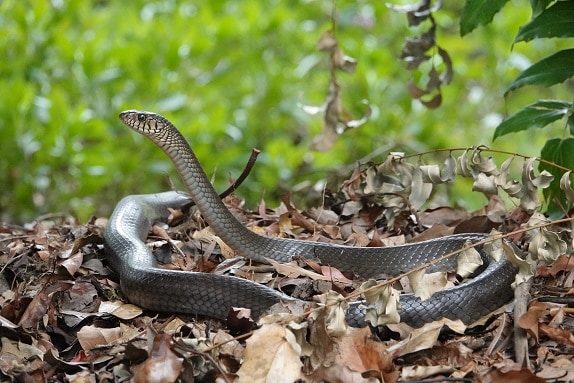
In some countries, you can’t walk anywhere without seeing grey squirrels. In southeast Asia, the creature it’s nearly impossible to escape is the 2 metre long oriental ratsnake. This snake has a large territory ranging from Iran in the far west, to Java in the far southeast. In Thailand and Vietnam it’s one of the longest snakes, behind the reticulated python and king cobra, with locals practically stepping over it, popping up on front porches and gardens all the time.
The oriental ratsnake’s record length is 3.7 metres, while the average range is 1.5-2 metres. Despite this, a 2.3m male weighs nothing more than 5.5 pounds, less than a newborn baby.
This is a long but fairly thin snake, rather than bulky and muscular. Their head is also fairly small, rather than a cobra’s triangular head. They’re easily recognisable by the black stripes surrounding their lips on either side, contrasting against the yellow, light brown, or grey scales across most of their body. Oriental ratsnakes have large eyes, with a black pupil and golden iris. Their tongues are a purplish black, while their bellies vary from white to grey.
| 2 | A daredevil with no inhibitions |
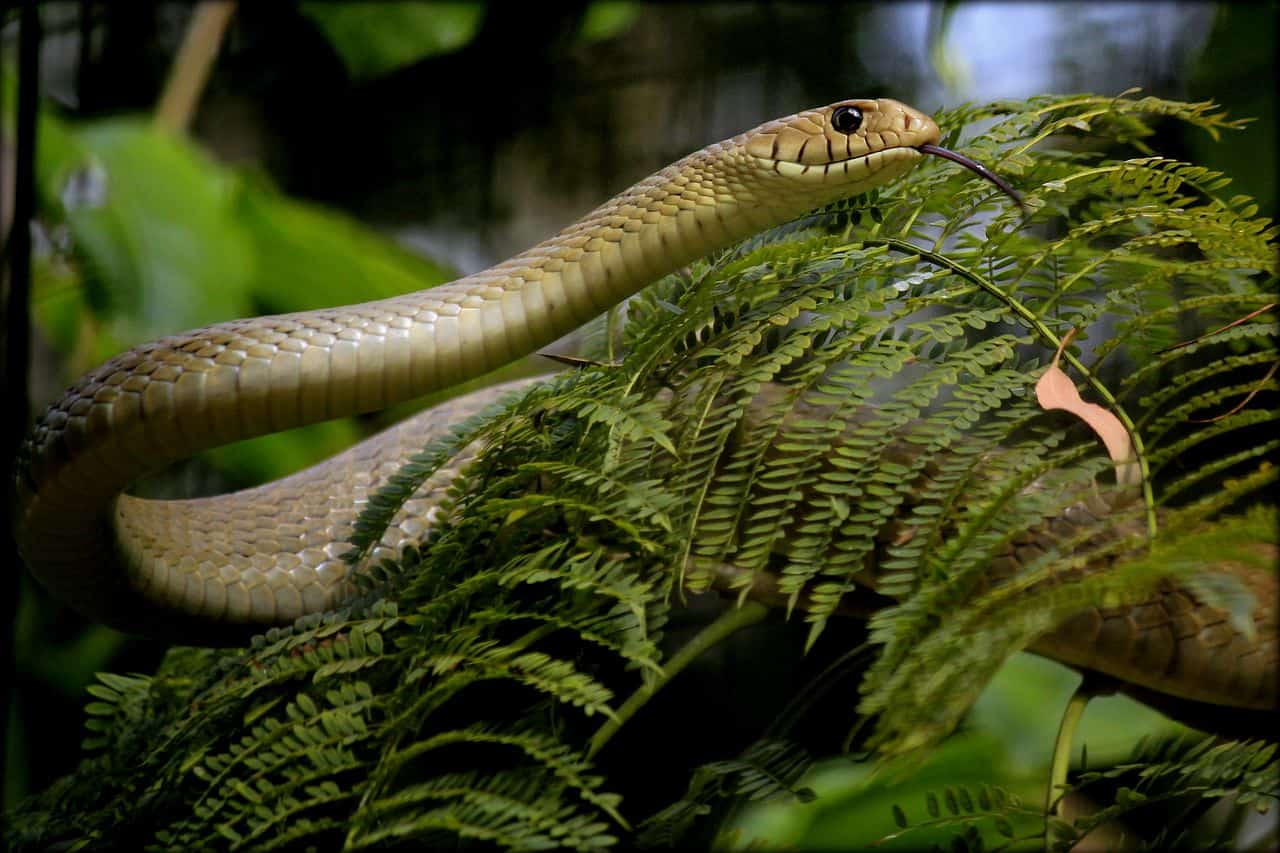
Oriental ratsnakes are constantly encountered by humans because they’re completely uninhibited and lack any shyness. They’re often seen performing wacky stunts in people’s gardens or in local parks. One time, an oriental ratsnake was seen trying to raid a nest of baya weavers in a tree. It was doing a nightmare manoeuvre: its tail was tightly coiled around a lower branch while trying to thread its upper body into the gap. Amazingly, it succeeded.
In a tale from south India, one slithered up into a baya weaver nest to grab the eggs. Unfortunately, it didn’t comprehend how its weight would affect the laws of physics. The nest toppled over and plunged to the ground, snake and birds still inside, before landing in a 10 metre wide well. The oriental ratsnake shook itself off, swallowed the birds and slithered away unharmed.
Oriental ratsnakes have unusual resistance to cold weather, swimming around in wells in December at air temperatures of 10C (something most humans wouldn’t like). The most demented thing is their killing methods. There’s no venom nor constriction with oriental ratsnakes. Instead, they simply sit on prey, and crush them with their body weight.
| 3 | Eats random objects |
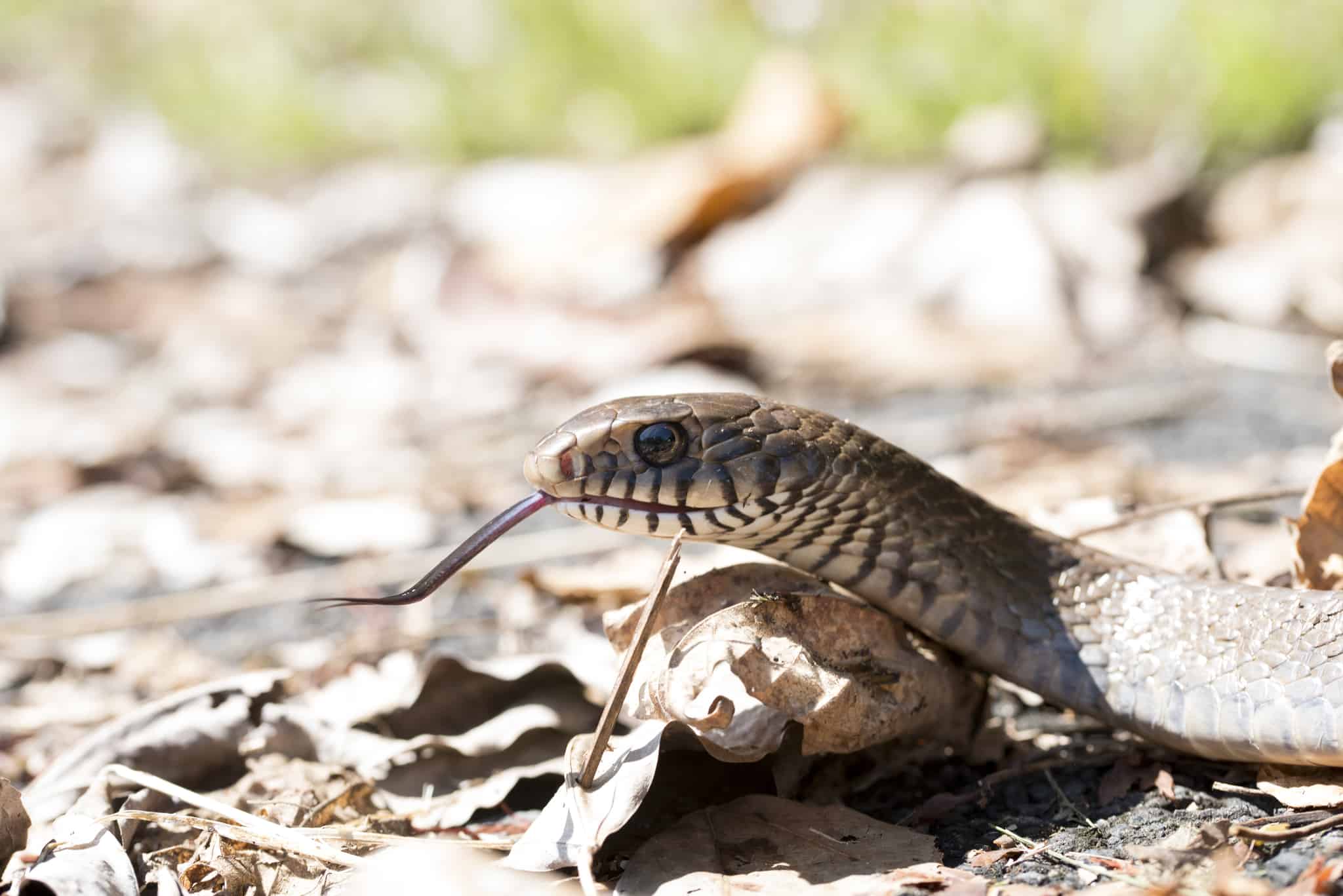
The craziness extends to the oriental ratsnake’s eating habits as well. The species often slithers through town marketplaces to nobody’s worry, although more superstitious Thai villagers might stand back and hurl stones, not understanding its lack of venom. In 2008, scientists followed a 173cm ratsnake in Satara, India. The snake approached a 5.5cm onion, slithering forward like an unthinking terminator, and began swallowing. It successfully got the onion beyond the head, but started writhing and died 3 minutes later.
The scientists later documented another weird meal, an 157cm oriental ratsnake eating a cloth discarded on the streets of Jabalpur, possibly a car-washing cloth. The ratsnake spent 50 minutes trying to swallow the cloth, before the scientists grabbed the loose end and made the snake regurgitate it.
Yet another demented oriental ratsnake was seen slithering over to a condom someone had abandoned in a garden. Lured in by some weird desire (probably a scent), it swallowed the rubbery item.
In 2014, an oriental ratsnake was spotted swallowing socks. Some snakes are smart about their eating – the four-lined snake instinctively avoids large prey – but the oriental ratsnake has no brains at all. It seems to pick up weird scents everywhere that activate an uncontrollable hunger.
| 4 | Regular diet: prefers amphibians |
The oriental ratsnake is a member of the farm clean up snake crew – a serpent that loves to hang out in crop fields and eat rodents. In doing so, it does farmers a massive favour, even though some rice farmers are convinced that oriental ratsnakes are malicious, supposedly sweeping their tails around to devastate fields. Young oriental ratsnakes also eat insects, another clean up operation.
Officially, the oriental ratsnake eats virtually all food groups. Mammals were long assumed to be their favourite, but a study from Java, Indonesia analysed their guts, and found amphibian remains in 71% and mammal remains (like fur) in 14%. A second Javan study also put amphibians on top.
The main species included crab-eating frogs (Fejervarya cancrivora), Boie’s wart frog (Fejervarya limnocharis), and Asian common toads (bufo melanostictus). There were many unidentified mammals, and the house sparrow (Passer domesticus) was also a common meal. The only caveat is that their range is huge, and Java is just one island. In Thailand, they could be more tilted towards mammals.
| 5 | The legendary growl |
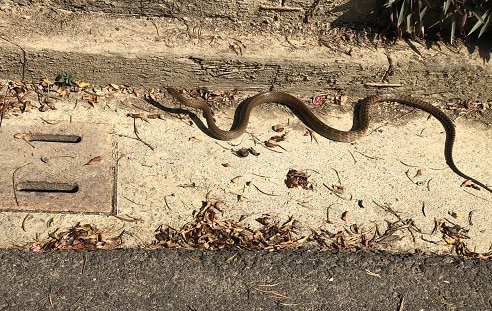
One of ptyas mucosa‘s most recognisable features is a deep, low growl it uses to scare people, far removed from the usual hissing. You can hear the sound from yards away, and it was described in 1899 as “something like the deep growling of a big dog”.
It turned out to be part of cunning plan: to imitate the venomous king cobra, which also has a rare deep growl. Scientists wanted to uncover the mechanics in 1999, and despite the two species sounding the same, the growls worked completely differently. The king cobra had a throat lined with “tracheal diverticula”, pouches along the membrane which caught and modified sounds as they travelled upwards. It isn’t too different to a wind instrument, but the oriental ratsnake lacked those pouches altogether.
The scientists wrapped surgical tape around the ratsnake’s neck, tightly enough to prevent the neck flaring posturing, but this failed to prevent the growl. They then noticed that the oriental ratsnake had unusually high amounts of elastin in its tracheal rings, the horseshoe shaped rings which all snakes and humans possess in the throat. They also found that the trachea was unusually large, and extended into the body and away from the rings.
Their new conclusion was that when threatened, oriental ratsnakes use the elasticity to compress their tracheas, forcing the soundwaves through a narrow gap and morphing them, via an interaction with the tracheal rings.
| 6 | Wild and unpredictable |
The oriental ratsnake is not a calm snake. They’re very fast and excitable, and zip through the Thai, Indian or Javan countryside at high speeds. Sometimes they’ll charge into water at the first sight of a human and disappear, but nothing is guaranteed. The oriental ratsnake can see humans from long distances, and can break out into a series of mock, lunging bites while a person is still meters away.
If you dare to grab them, then they thrash around violently and have no hesitations about biting painfully. Oriental ratsnakes lack any venom, but their teeth can break off into the victim’s hands and cause a nasty wound unless dislodged immediately. Most oriental ratsnakes curl their bodies around the handler when picked up.
Another trick is the chest-rearing display, but this is different to normal. Instead of widening their necks and flaring like a cobra, oriental ratsnakes push their chest scales forwards, which makes them keeled (rough). This also stretches the skin on the side of their necks, revealing brighter yellow colours between the brown scales.
| 7 | Habitat: from villages to cities |
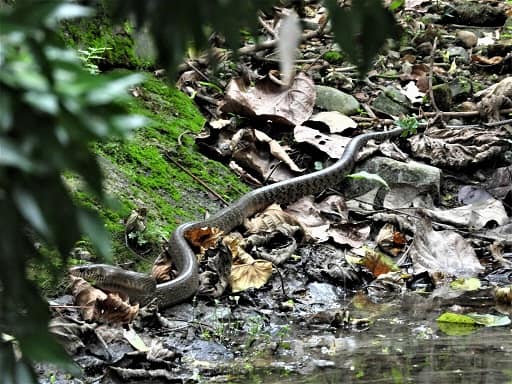
The oriental ratsnake is a multi skilled snake and can survive in almost any habitat. Naturally, they prefer open forests or grassy areas adjacent to those forests, but they also appear in coastal regions, parks, arid areas, and shrubby rock slopes. Compared to their relative the Indo-Chinese ratsnake (which overlaps with them in several countries) they seem to prefer drier areas, but the oriental ratsnake sometimes appears in wetlands as well, and is a skilful swimmer.
Oriental ratsnakes are at home in inner cities, taking advantage of sewer lines and drainage ditches. In Delhi, for example, they’re common in the posh neighbourhood of Vasant Kunj, and the Vasant Vihar district where many diplomatic centres are based. The oriental ratsnake is a top species that city snake catchers are summoned out to deal with. Consequently, they’re just as great for rat plagues in inner cities as they are for crop fields.
As a diurnal (day-faring) snake, it’s common to see oriental ratsnakes slithering around at high speeds in the open. They’re the opposite of the shy and reticent sunbeam snake.
| 8 | The Indonesian hunting machine |
Like its cousin the Indo-Chinese ratsnake, Ptyas mucosa features in a colossal Indonesian hunting industry. Being as common as squirrels, the amounts exported are gigantic. In 1990, the authorities took the first action and limited annual skin exports to 500,000. They lowered levels to 200,000 in 1992, before a ban was slammed down in 1993, which lasted 12 years until 2005. During the ban, it was still estimated that 50,000-100,000 oriental ratsnakes were exported per year, along with 3-6 tonnes of dried meat.
As usual, China is the main meat market, believing it to have a warming effect in the winter colds. As of 2010, there were 5 legally registered oriental ratsnake exporters in Indonesia, with Jakarta being the largest single port to set sail from.
No proof exists, but the Indonesian population may be suffering from this hunting bonanza. One seasoned snake trader, active for 30 years, said that he was once able to buy 300 oriental ratsnakes per day on the local markets, but was now reduced to just 25. According to 8 local harvesters, one of whom had been in the game for 35 years, oriental ratsnake numbers had noticeably fallen.
| 9 | Harassed by squawking birds |
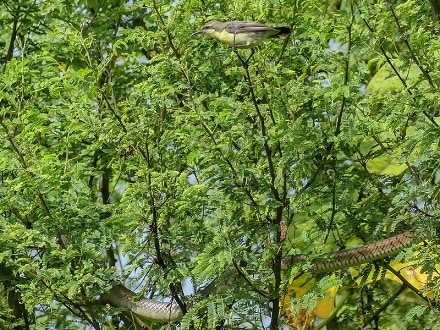
Many oriental ratsnakes find themselves swarmed by birds which use mobbing in self defence. Indian mynahs will swoop down and flap around the snake, not necessarily using pecking, but in a squawking ruckus designed to make it reconsider (which often works).
One great tale happened in Mumbai, India, when a 165cm+ ptyas mucosus slithered up a tree outside an office campus. This tree had a crow’s nest high on its branches, so the snake’s target seemed evident, but the moment it entered the branches, the crows left the nest and swung into action. They swooped over to the snake and attempted to deliver vicious pecking in self defence. The confused ratsnake retreated between some bark, covered by thick leaves which defended it from pecking.
1 hour passed in this sanctuary, before the ratsnake cautiously ventured out again. Right on cue, the vigilant crows reactivated and commenced mobbing. This time, things were worse for the ratsnake, as 2-3 house mynahs joined the party. Then the local red-whiskered bulbuses flew to action, and before long, the entire bird population of the tree had roused to kick the invading snake out. A palm squirrel also ran along the branches, making loud calling sounds (maybe warning fellow squirrels). Amid nonstop flapping and pecking, the snake finally withdrew and left. It had clearly bitten off more than it could chew.
| 10 | Married to the king cobra? |
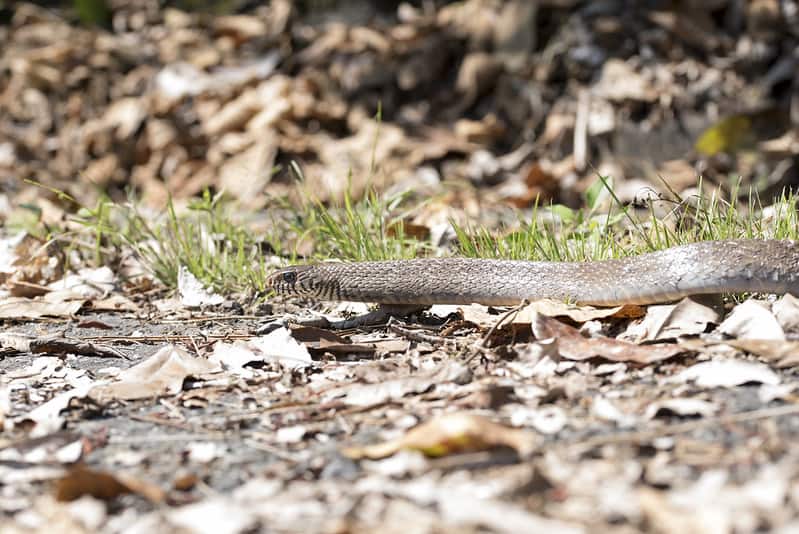
According to local superstition, oriental ratsnakes have a savage ability to whip people to within an inch of their life, using their unusually long tail (the tail is indeed longer than average). They’re also believed to poison people with this tail.
Another tale of legend is their symbiotic relationship with the king cobra. The two are forever linked: the oriental ratsnake is believed to be the wife, while the king cobra is the husband. The reality is that oriental ratsnakes are on the menu of the king cobra, which is a bully that eats all the smaller and weaker snakes. At 2 metres, oriental ratsnakes are long, but king cobras are longer, commonly reaching 4 metres.
The eggs of oriental ratsnakes are laid all over the place, like their habitats. But popular spots include haystacks, rotten logs, compost piles, bamboo root systems, or random crevices in rice fields. The egg numbers vary from 6-30, with 15 being typical. When they emerge, newborns measure 36-41cm, already longer than an adult ringneck snake.
